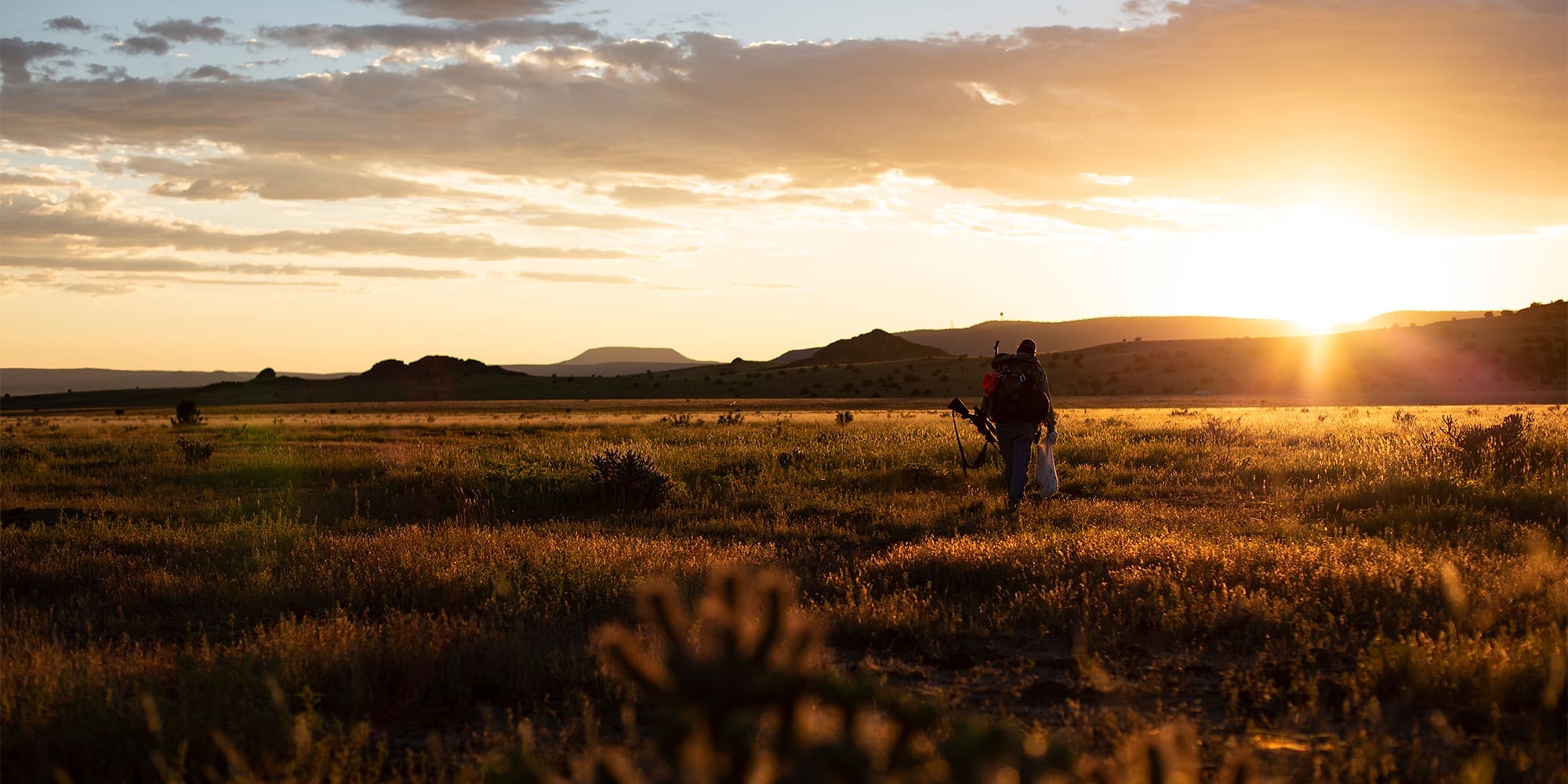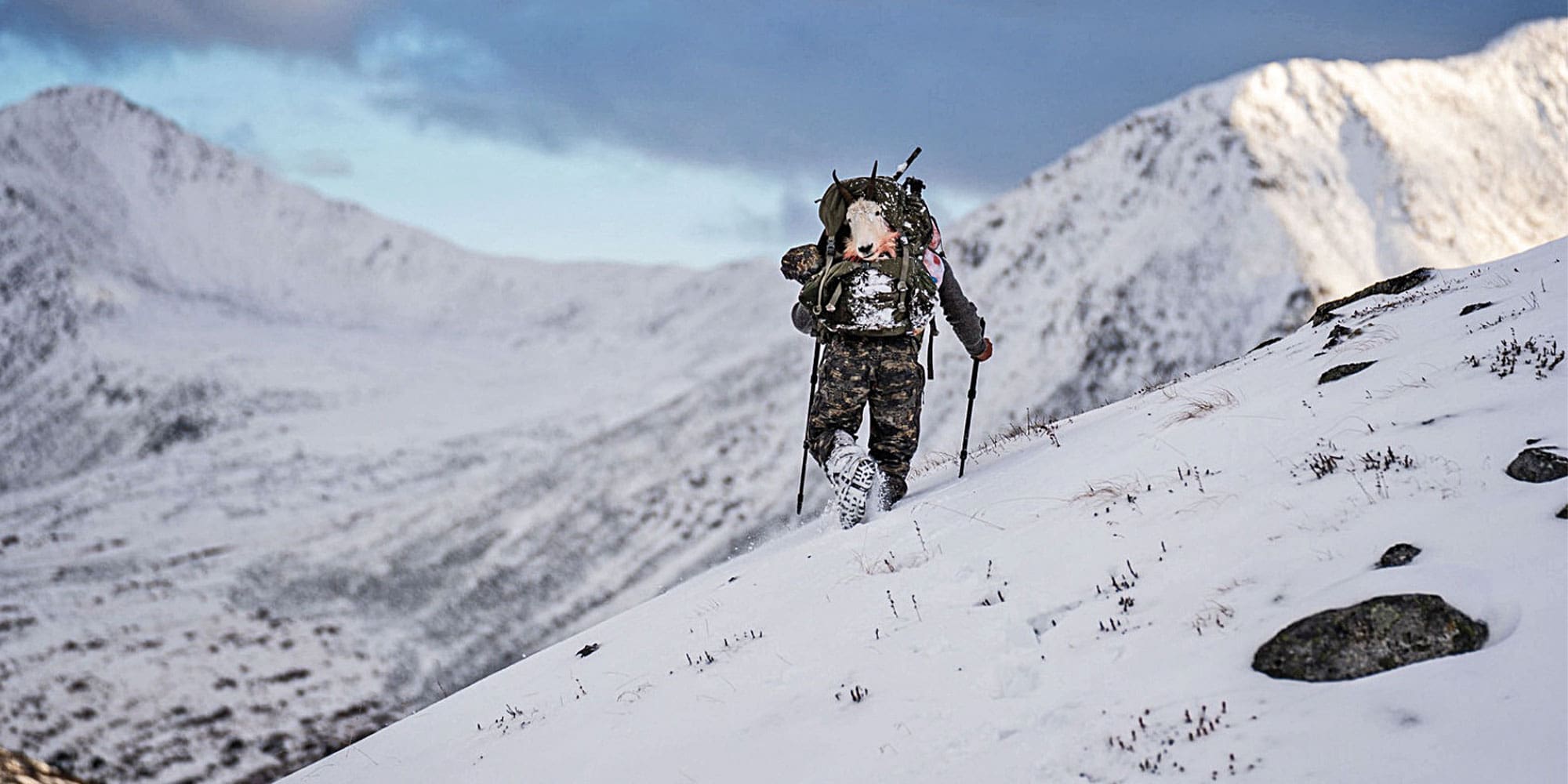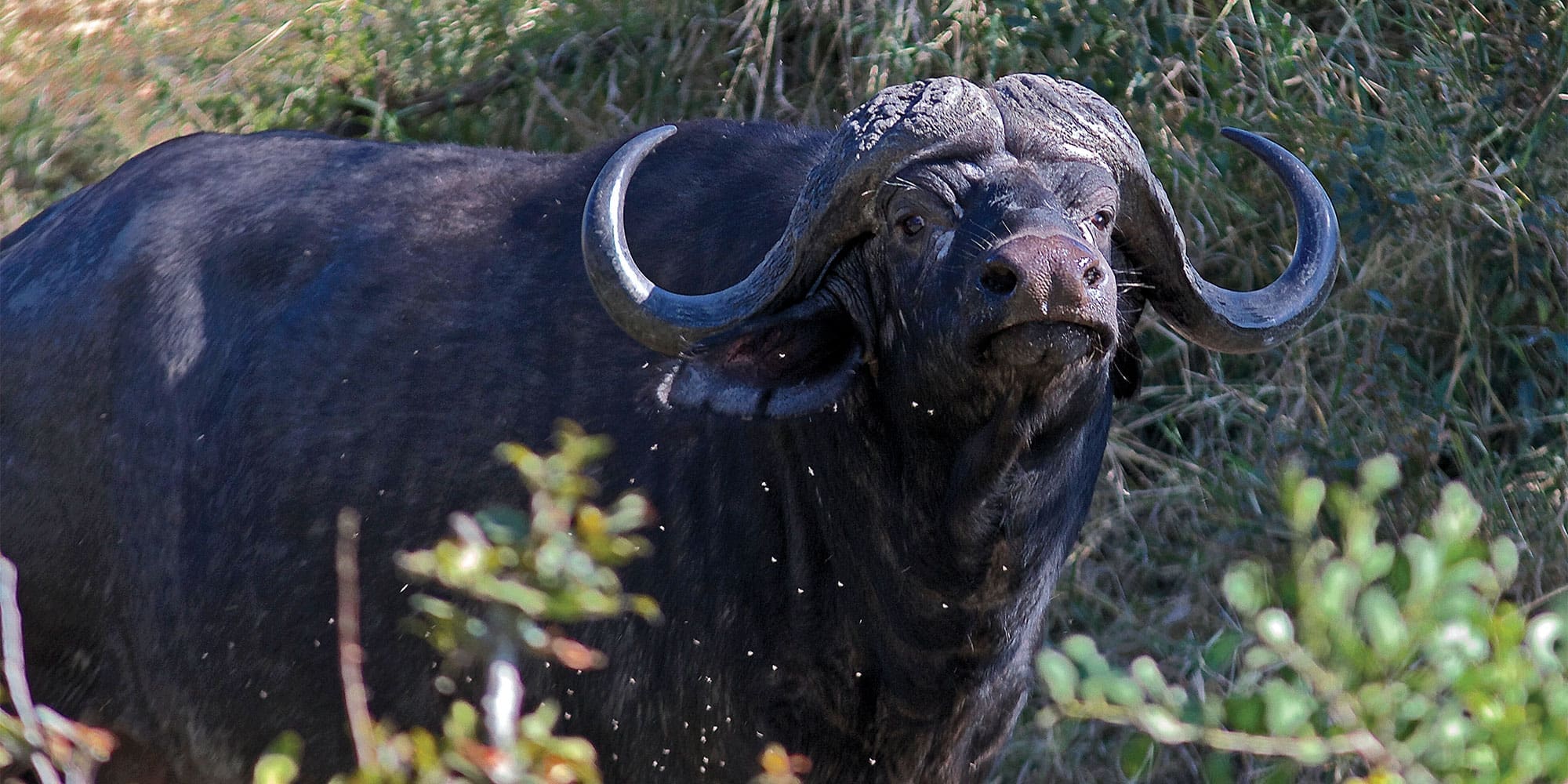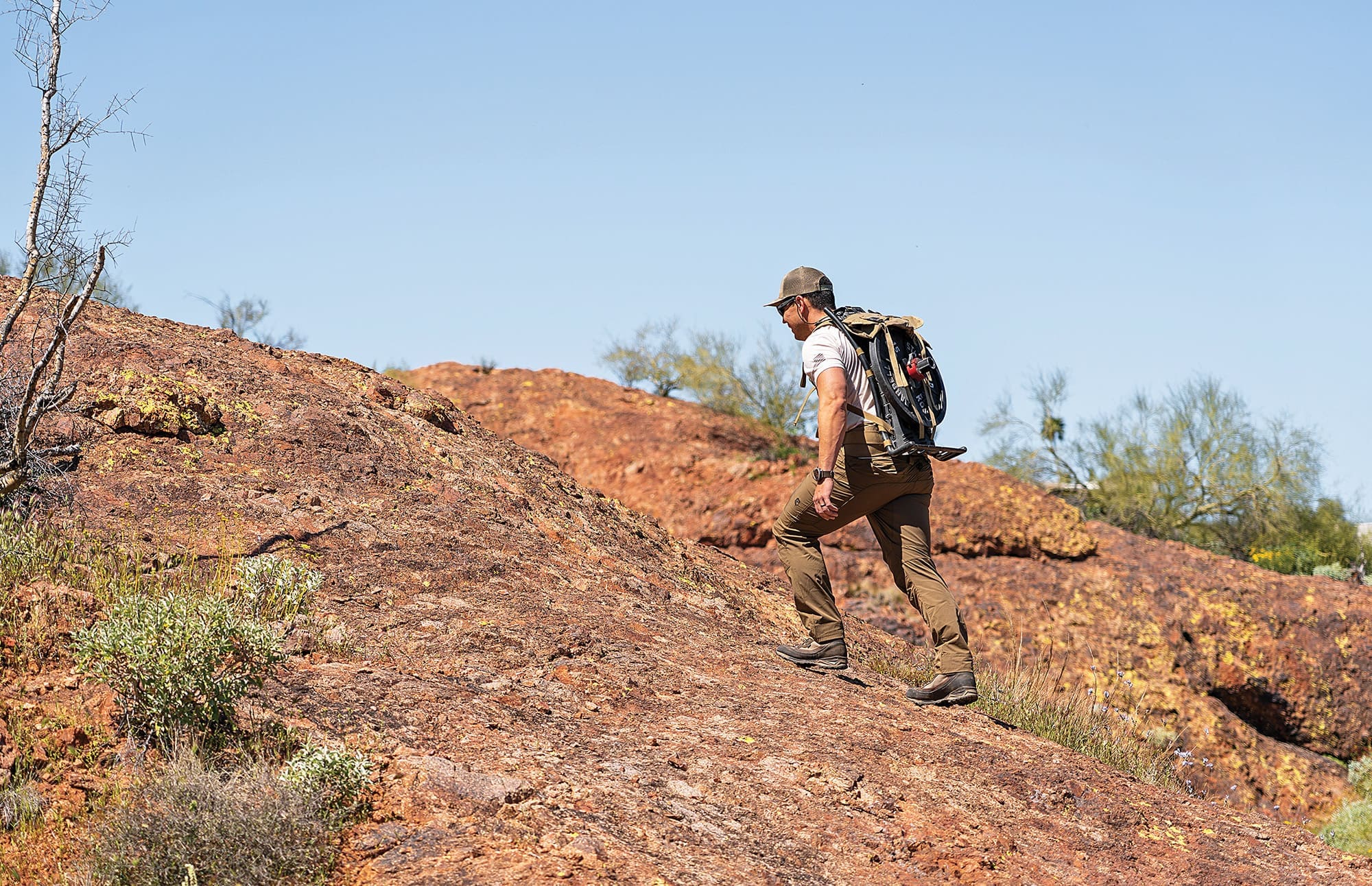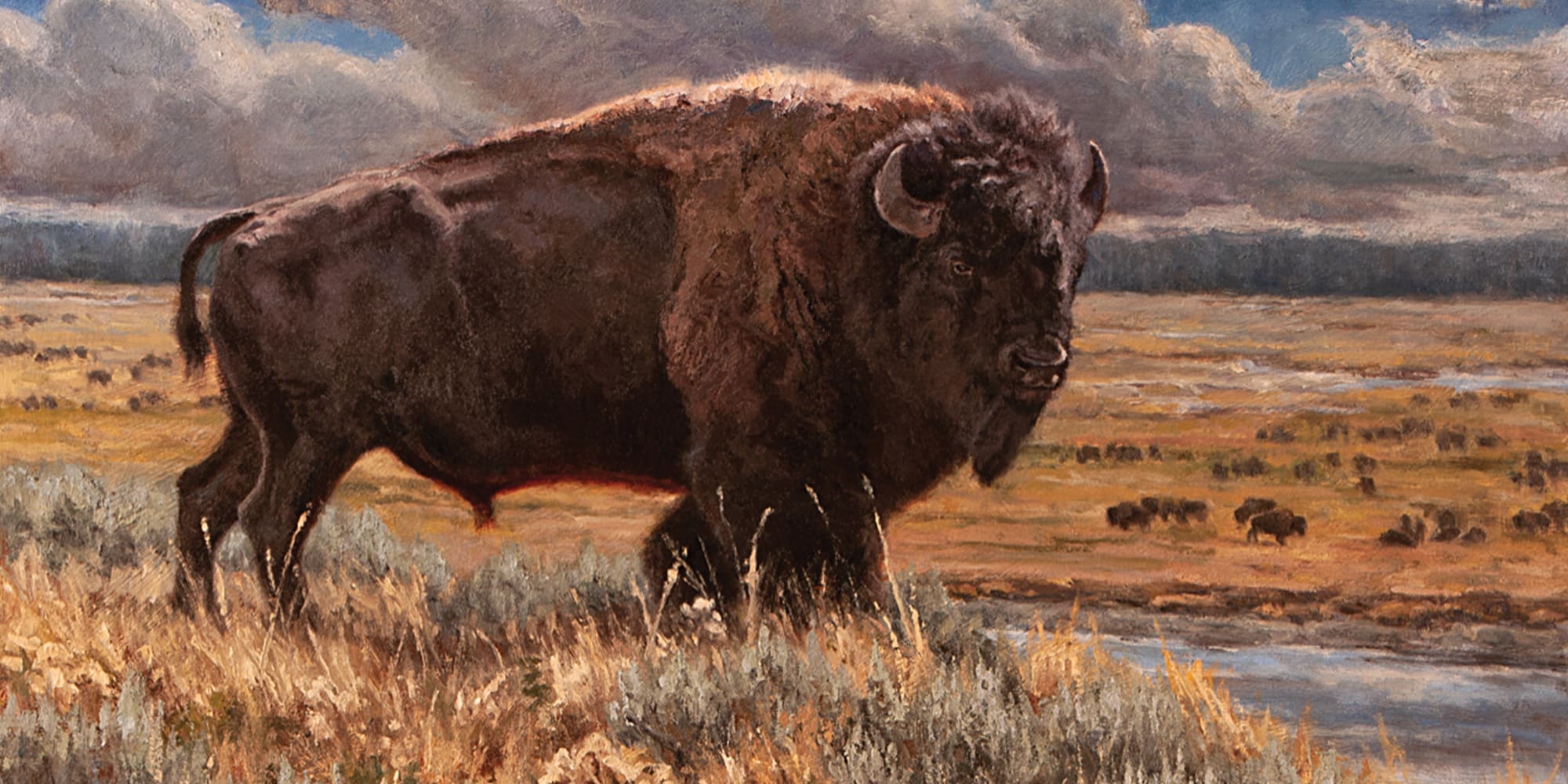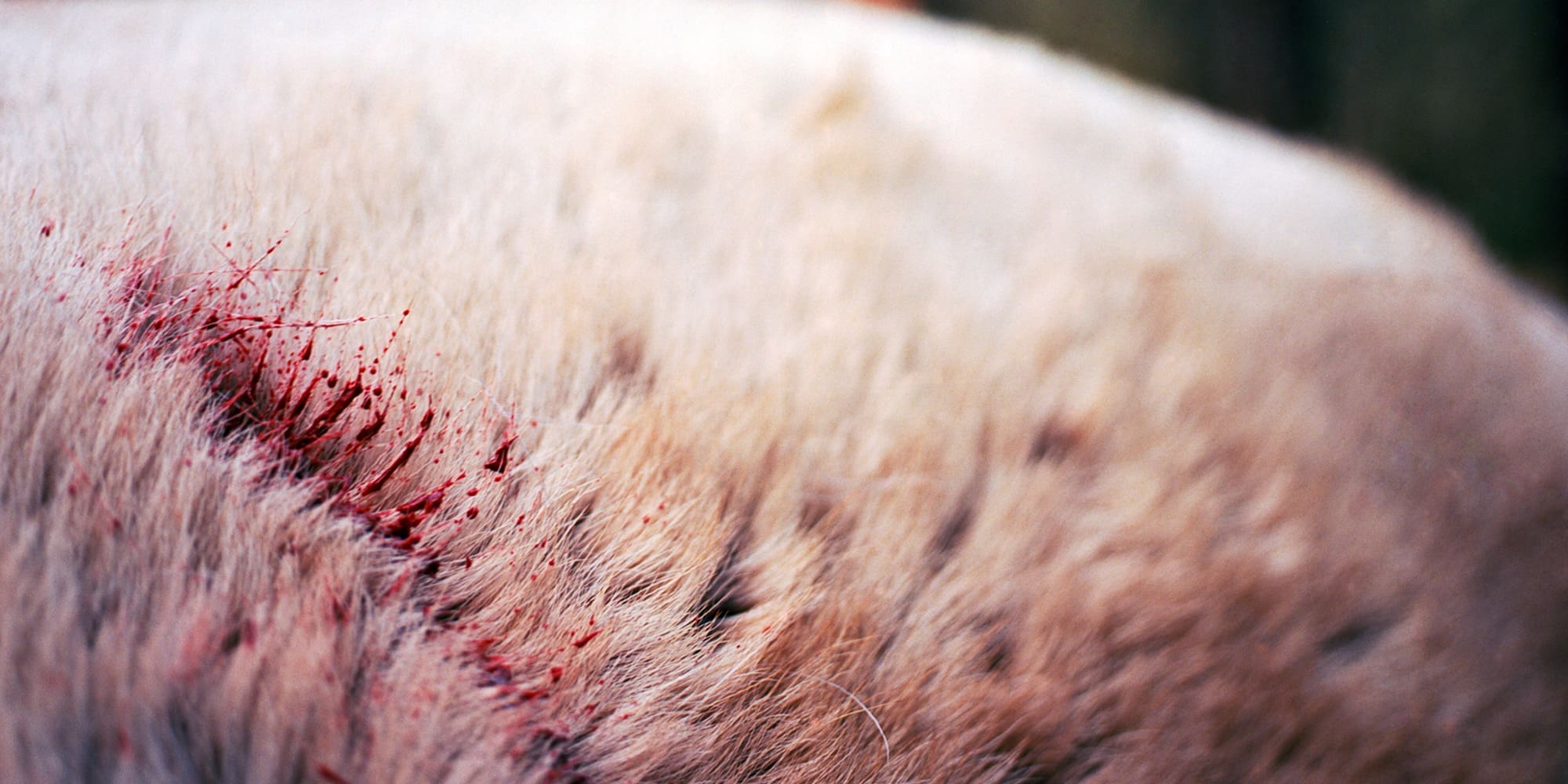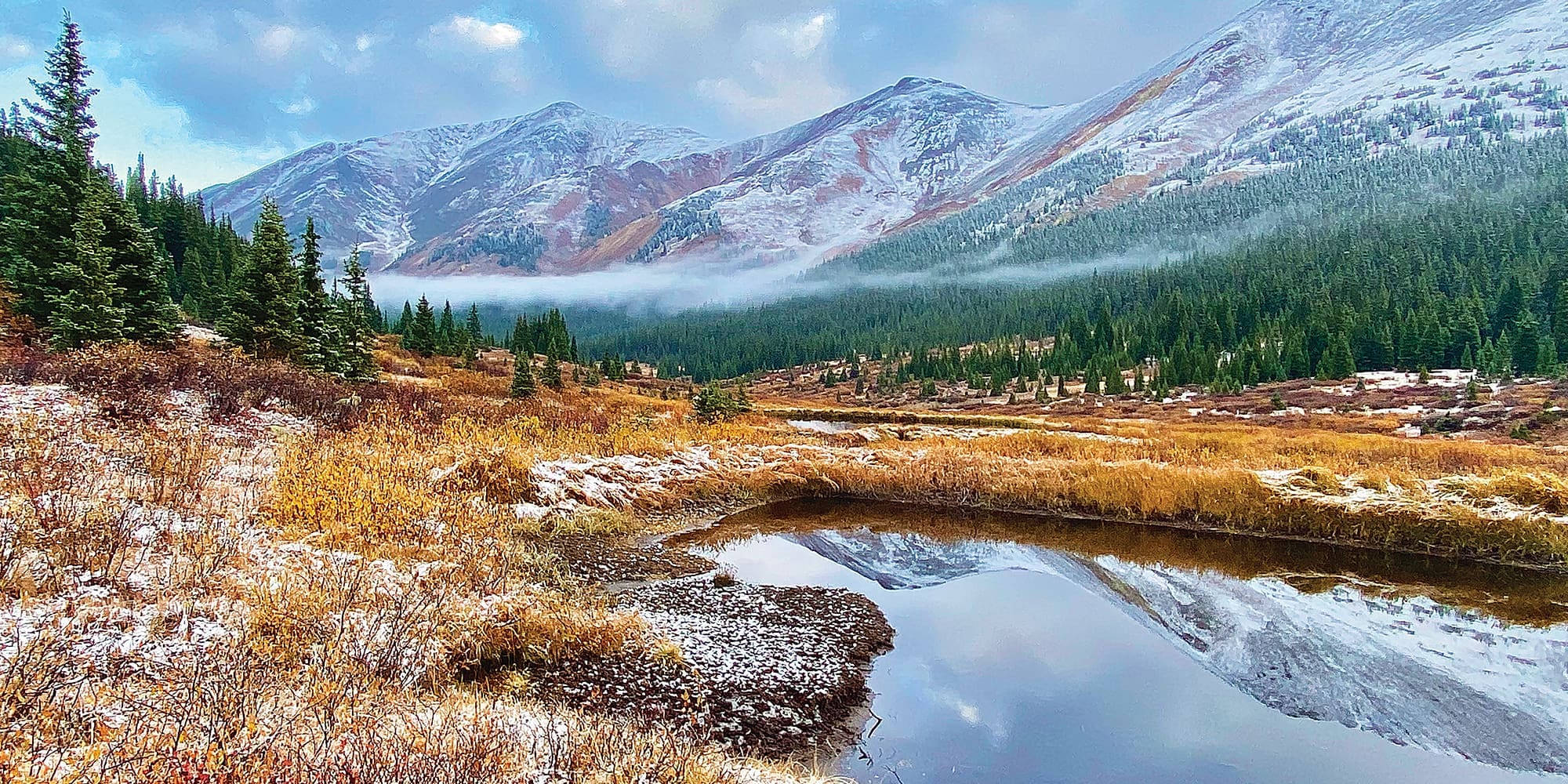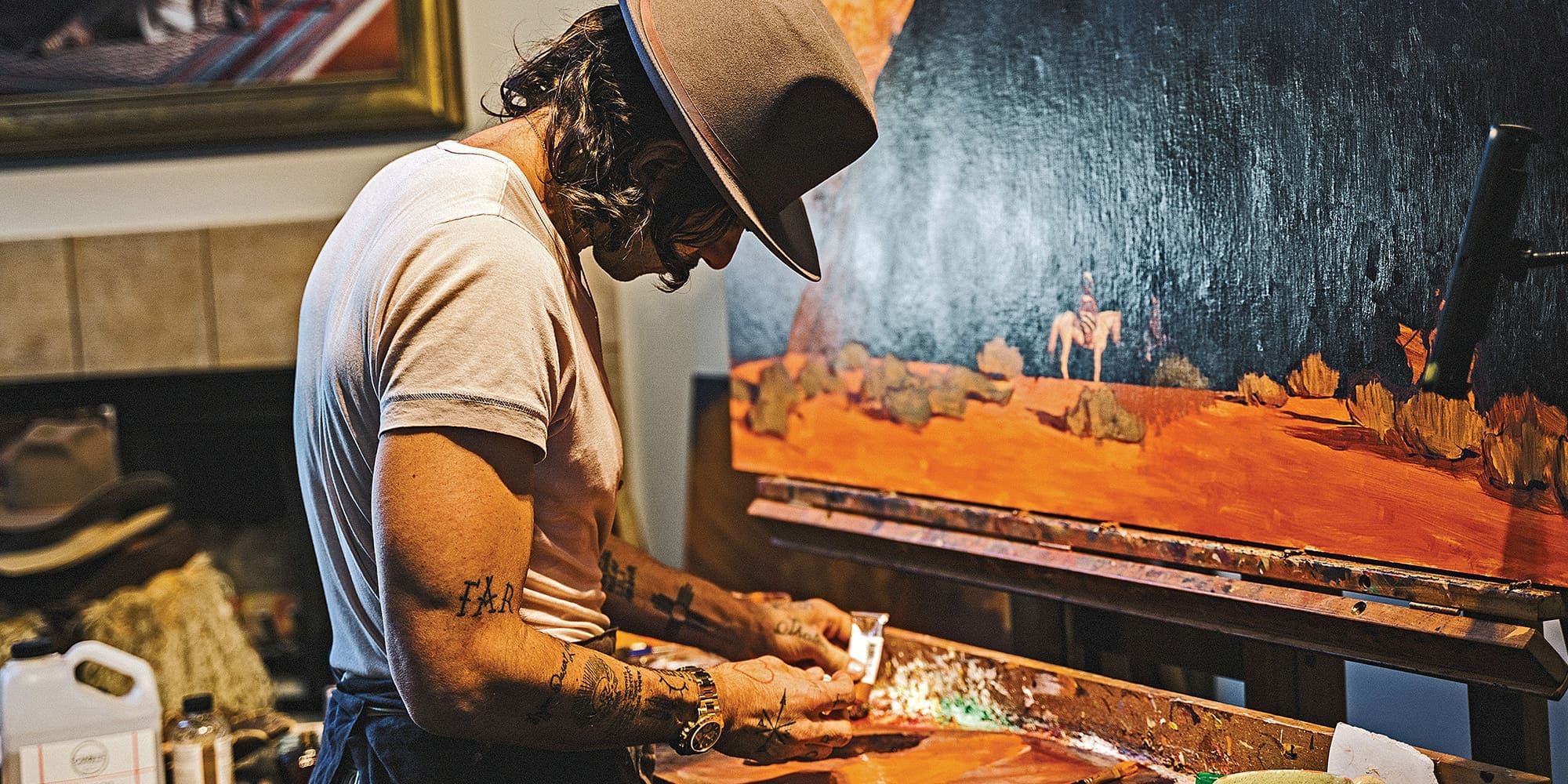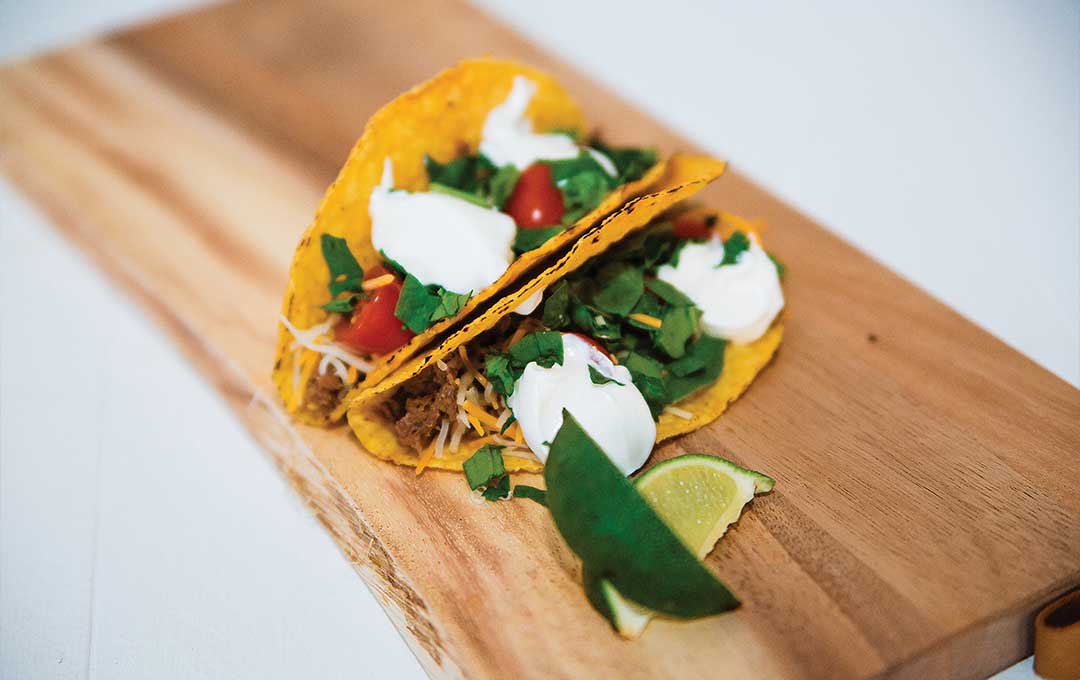
NOTICE: Certain links on this post may earn a commission for Western Hunter Magazine from Amazon or our other affiliate partners when you make a purchase. Thank you for your support.
Eat Bear Meat
With each year that goes by, it seems that the wild game meat movement gets stronger and stronger. It’s comforting for folks to know where their protein is coming from, and it’s drawing more people towards the hunting lifestyle. With things like meat recalls happening in grocery stores, heck, I don’t blame them at all. Meat recalls aren’t things that hunters worry too much about at all - being in the driver’s seat.
The vast majority of this urge for wild meat is really centered around ungulates like deer and elk. Whitetail deer, especially, make up a huge portion of deer harvested in the United States and are the most hunted wild game animal in the country. As for elk, they offer both adventure and a load of meat that will surely put a smile on any hunter’s face. While deer and elk rule supreme in this “eat-what-you-kill” movement, they are not the only ones that offer some fine wild table fare. Black bears may not be the most popular for eating, but they are nothing to scoff at on a dinner plate.
Bear Meat is Old News
While it may be front-page news for some, the consumption of bear meat isn’t something that started yesterday. People have been eating bruins well before our time. Native Americans used bears for all sorts of things such as making tools with bone and claw, using the fat for believed medicinal purposes, keeping warm with the hide, and of course eating the meat. Bear meat was considered a prized food in some tribes, making up a significant portion of their meat consumption.
Early American settlers also utilized bear meat, hide, and fat. Folks like Daniel Boone made a living selling the stuff to market. Eating bear was fairly normal until the early 1900s when the Teddy Bear was brought to life after Teddy Roosevelt spared the life of a bear that was tied to a tree. On that hunting trip to Mississippi, Teddy was having a rough go at finding bears.
His guides captured a bear and tied it to a willow tree for the president to shoot. Roosevelt felt that it wouldn’t have been sportsmanlike to do so. Nonetheless, he ordered the bear be put down, given the rough shape it was in. From that point on, it seems that eating bear meat has flown under the radar of the vast majority of American culture. It was the beginning of people looking at bears as cuddly playthings, and their hearts have grown softer for the species.
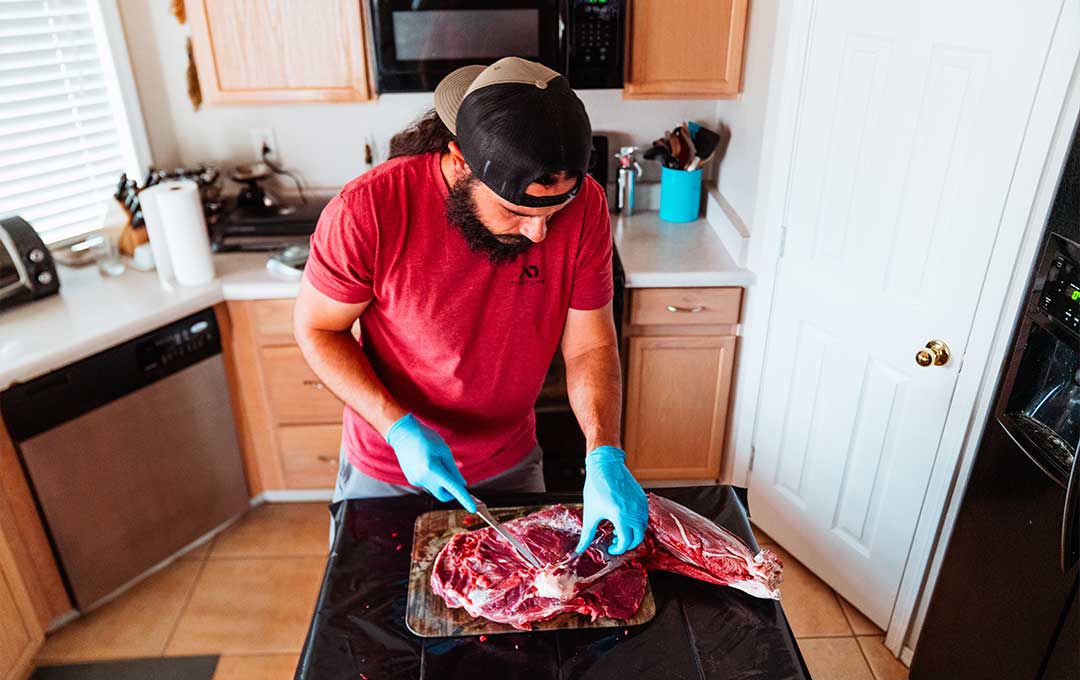
Horror Stories of Bear Meat
The speculation surrounding bear meat seems as vast as the species itself. Throughout my years of growing closer to bear hunting and bear meat, I’ve heard things from folks like “you can’t eat bear meat, bears are too gamey, they are too greasy, they taste like garbage,” and so on. The most popular deterrent is the fear surrounding trichinosis.
Trichinosis is a parasitic worm that resides in pork and some wild game. Anything that is consuming other animals seems to be at risk of contracting it, so predators like coyotes, mountain lions, and bears should be noted. Yes, bears indeed can carry trichinosis and are responsible for the majority of human cases in the U.S. This is from improper cooking though, I assure you.
The actual temperature that will kill the parasite is 137 degrees. With that being said, all of the meat HAS TO BE at that temperature. I wouldn’t advise calling it good here. Most cook the meat to 165-170 degrees to be safe. Trichinosis can absolutely make you very sick, but it isn’t a deal-breaker and is quite easy to avoid.
The misinformation about bear meat just shows how far our society has ventured from the natural world - the world where, at one point, eating bear was normal. This is quite sad, as it keeps many from ever trying the stuff. Granted, it does sound much more wild saying that you’re going to eat bear rather than elk. In the past, I’ve always tried educating friends and family about consuming bears.
One time, during a holiday dinner we had, I served venison, elk, and black bear. The black bear disappeared from the countertop quicker than the venison and elk. People could not believe how delicious it was and were going back for seconds. So, when it comes to the horror stories one might hear about bear meat, I’d urge you to not pay attention. Take the time to form your own opinion and go from there. If you don’t like the meat, that’s fine, although I’ve never met someone that didn’t after it was prepared properly.
It All Starts in the Field
Just like any wild game out there, the quality of the meat all starts in the field. Many bear hunts happen during warmer parts of the year. With that big, thick hide they carry around, this can be an issue. Years back, we lost a bear because of this. After shooting the bear in the evening, we decided to leave it overnight and retrieve it in the morning. Upon our arrival, the bear had gone past rigor and was limp. Once getting the meat home, it was very apparent it had gone bad and stunk to high heaven.
Stuff like this is never easy to deal with but offers a great lesson. Especially in warmer months, bears need to be taken care of ASAP. This means getting the hide off and separating the meat from the carcass. From that point, start the trek back to the cooler and get it on ice. Every time I’ve followed these rules, whether with friends or alone, no meat has been lost.
The first bear I ever killed was in October. I remember after we skinned the hide, we couldn’t even see the meat and then found ourselves skinning fat. The layer was about 3-4 inches thick in some areas. In the field, we always take this off of the meat before putting it in game bags. Bear fat is a fantastic resource and can be used for all sorts of things. It can be rendered down into a cooking oil to make fried bear nuggets as well as used to make pie crust.
A friend once told me he brought cookies into work that were made with bear fat. The office devoured them. With that being said, I do think that bear fat is somewhat to blame for the “off taste” some folks talk about regarding bear meat. There is speculation surrounding freezing bear meat with the fat attached and the fat going rancid after some time. This is why I’ve always taken every bit of fat off of the meat before packaging, just like I would for deer or elk. I’m not saying leaving bear fat on the meat will definitely give it an off flavor, but I am saying I’ve never had an issue with such things.

How I Process a Bear
Once the bear is in the cooler and on its way back to your humble abode, one might be thinking about what they’re going to do with the meat and how they’ll process it. With the first few bears I brought home, I cut them up exactly how I would a deer or elk. Backstraps and tenderloins were steaks, hindquarters were used for roasts, steaks, and ground, front shoulders were all ground, the neck was used for roasts, and everything else was ground. Since the early years, I’ve changed up my tune a bit regarding what I do with bear meat. It’s all due to the types of dishes where I believe bear meat really shines. These are mostly slow-cooked meals or ground meat dishes.
With the above in mind, here’s how I break down a bear at home. I’m going to cover the main portions of the animal here. Just note that anything not listed here is likely used for ground.
Backstraps and Tenderloins
Unlike the backstrap/tenderloin steaks I’d normally get from ungulates, with bears I like to cut these into cubes for stew, strips for fajitas, or simply grind it. I tend to stray away from the steak game here, just because I like my steaks medium rare and lean on the side of caution with meat temps.
Hind Quarters
I mentioned above how I believe bear meat shines in slow-cooked dishes. The hindquarters are really to blame for that thinking. This is where you’ll get those tasty roasts we all look forward to during the holidays. I’ll split up the muscle groups of the hindquarter and just leave it be from there. These will be used for classic roasts and shredded or pulled meat recipes.
Front Shoulders
This might sound pretty boring, but for the front shoulders, I honestly just use it all for ground. That’s just me, as I like my burgers. A person could plan on making a blade roast though and keep that portion intact.
Neck
This isn’t unlike how I’d prepare deer or elk. The neck makes a fantastic roast. I’ll debone the neck meat and keep it in 1-3 pound roasts, depending on the size of the bear, of course.
The Grind
Many of you have probably either done or seen folks adding in pork or beef fat into their grind. There is nothing wrong with this at all, but you 100% don’t have to do this. I’ve never added fat into any type of grind at all and have never had any issues with burgers falling apart or not liking how things tasted. So, go that route if you want, but know it isn’t necessary at all.

A Few Dishes to Try
There are a few dishes that have become my favorites over the years when it comes to bear meat. These are super easy and delicious.
“Beargers”
Who doesn’t like a good burger? I put this at the top because this is something I eat weekly here at home. There’s really nothing fancy about it. We’ll add in our favorite burger seasoning, mix that into the grind, and then start forming patties. I like doing it this way so that in the future we just need to go in the freezer, grab a burger or two, thaw, and start cooking. There’s no thawing a one-pound bag, then forming a patty, then cooking. Cook the meat to well-done, add your favorite cheese if you’d like, throw on some toppings (lettuce, onion, avocado, etc.), and enjoy!
Bear Spaghetti
This is as simple as it sounds, but even more delicious. Not to mention, you can easily dehydrate this meal for your backcountry hunts. A homemade meal far from home is always nice. I like to use about a pound of ground bear meat for this. Cook the meat thoroughly while boiling water for your noodles. Once the noodles are done, toss the meat into the pot with them, and add in your favorite spaghetti sauce. Mix it up and let it sit on low for a minute or so, just until the sauce warms up.
After you’re done enjoying a nice “dinner de bear,” portion out the rest of the pot into single meals. Grab a dehydrator and spread those single meals onto one tray per meal, as thin as possible. We don’t want any big chunks, as these will take even longer to dehydrate. Set the temp to about 155 degrees and let the dehydrator do the rest. This will probably take about 12 hours. Now, you’ve got bear spaghetti in the backcountry. To rehydrate, add in about 8-12 oz of boiling water and let it steep for 15-20 minutes.
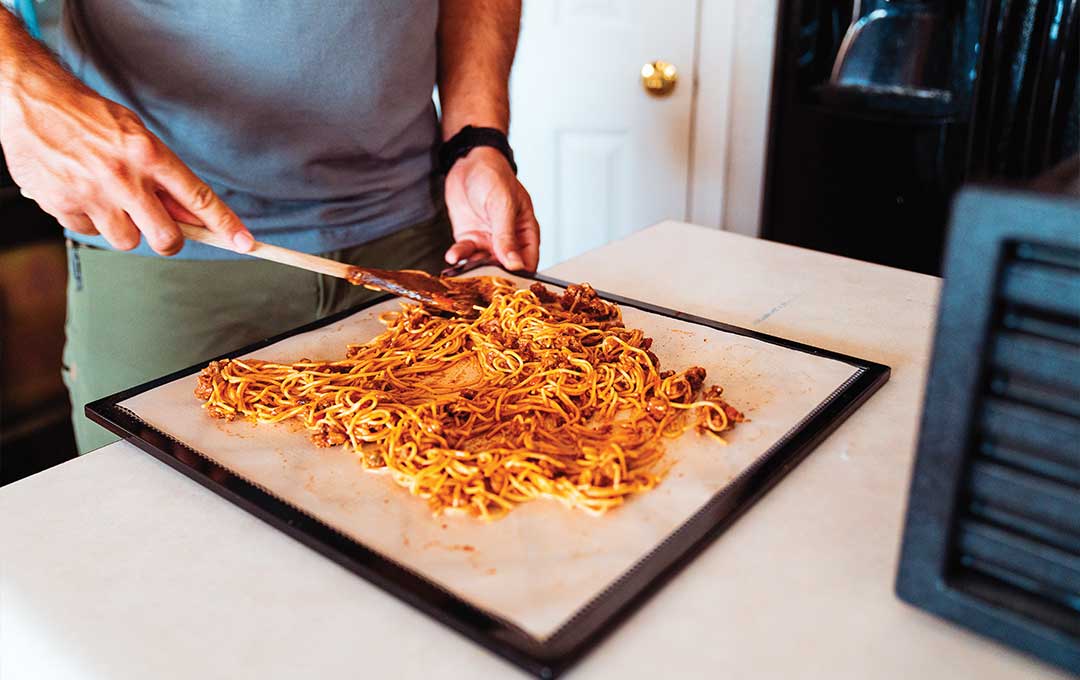
Green Chili Shredded Bear
Remember that holiday dinner I described above where the black bear meat disappeared before the elk and deer? Green chili shredded bear is the culprit! All you need for this is a crockpot, two-pound bear roast, two small cans of green chili, your favorite stock, and whatever other seasonings you’d like to add. I also like adding in a white onion with this. All you’ll do is put that roast in a crockpot and pour in the stock until the roast is mostly covered.
Add in seasoning like garlic, salt, pepper, cumin, etc, then crack those green chili cans and add those in as well with the onion if you’d like. Set the crockpot on high, and go about your day. Once the meat reaches 200 degrees (usually about 8 hours), it’s ready to shred. I like to shred the meat, pour out the crockpot, and then add the meat back in with some fresh stock. I’ll leave that on low for an hour. This works out great for taco night. Enjoy!
Closing Thoughts
Probably the most frequent question I’ve encountered when it comes to bear meat is “What does it taste like?” The best description I can come up with is it tastes like beef with the texture of pork. And after I tell folks that description, I tell them that if I served them bear meat, they’d never know and would simply think it was some type of beef dish. The stuff is that good, and it’s a shame it gets a bad rap. Bear meat may not get a lot of press, but it sure is worth a try if you haven’t had it. Don’t knock it until you try it. You never know. You might just find a new favorite wild game meat.
By Josh Kirchner





